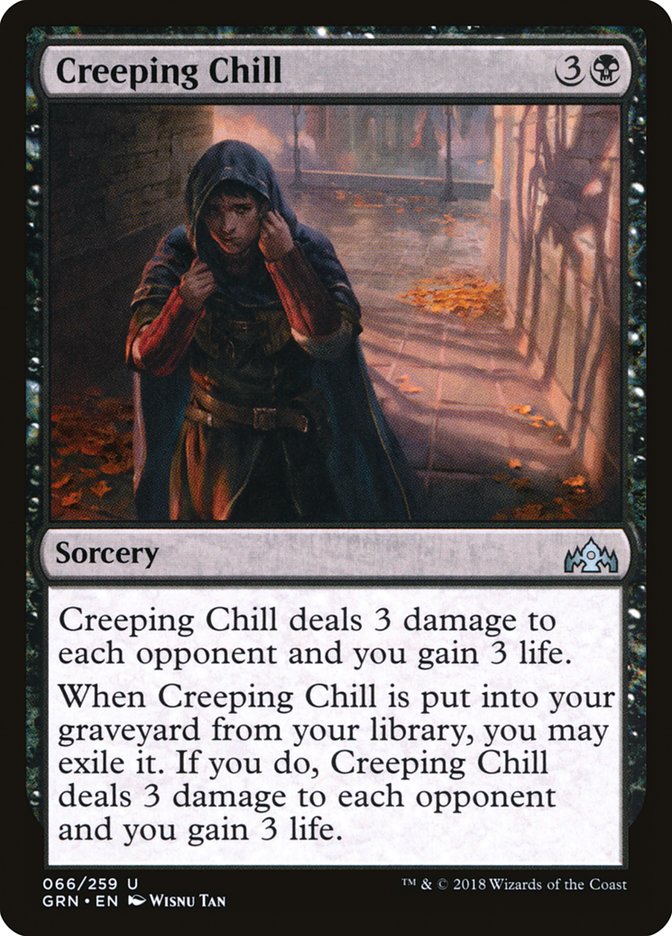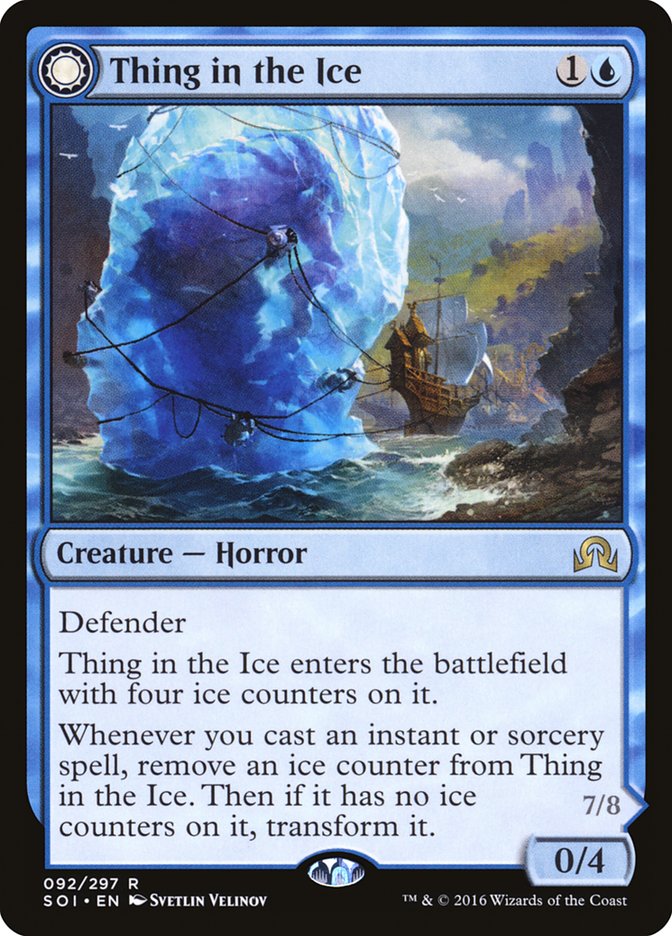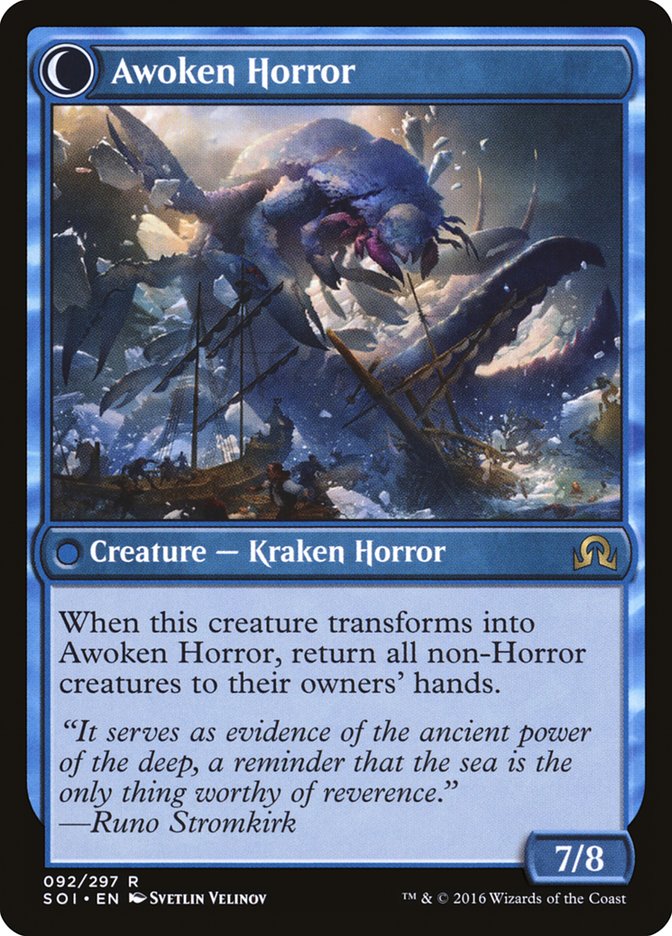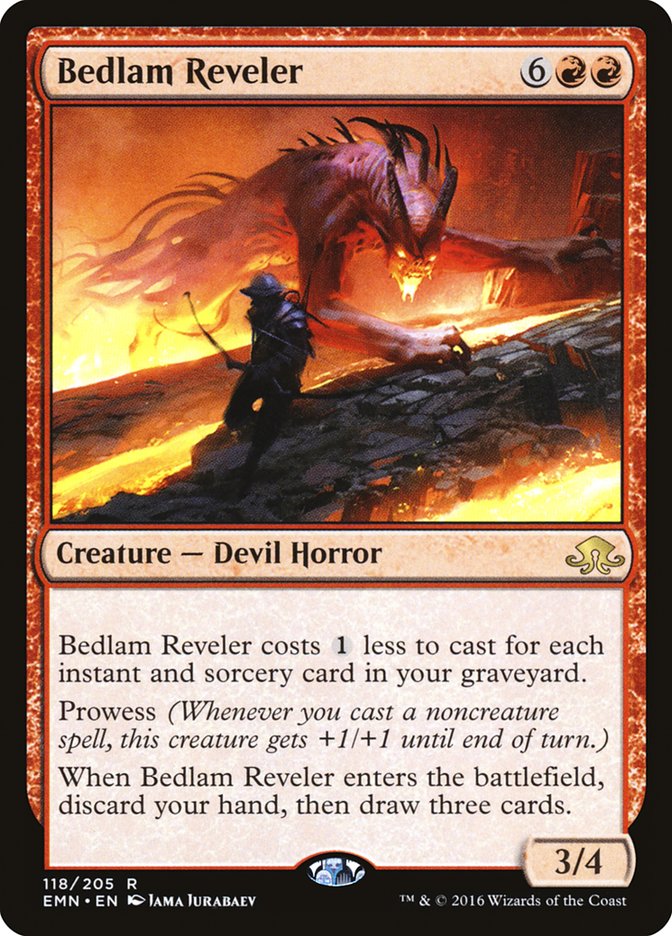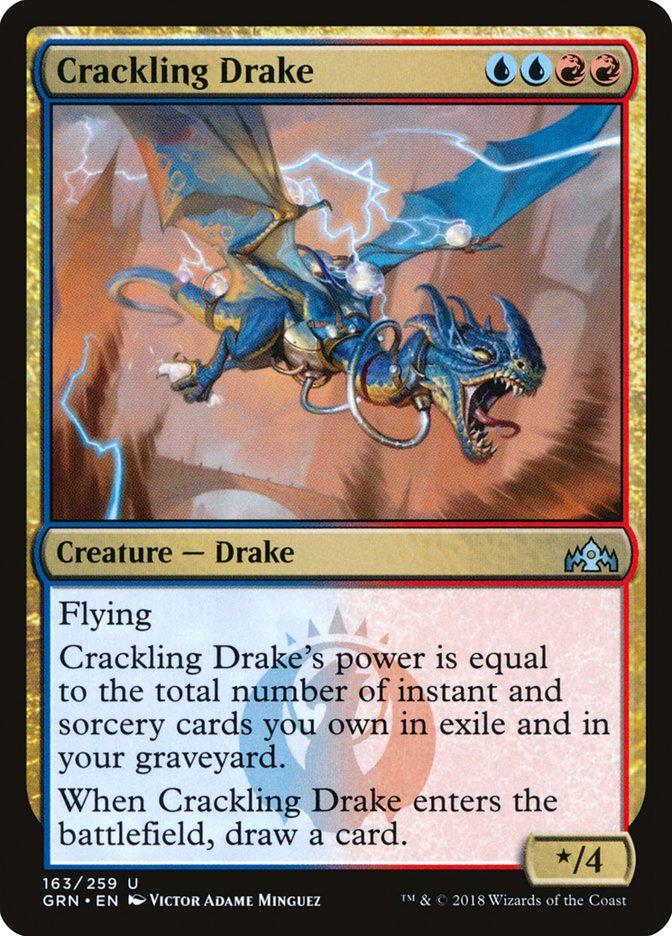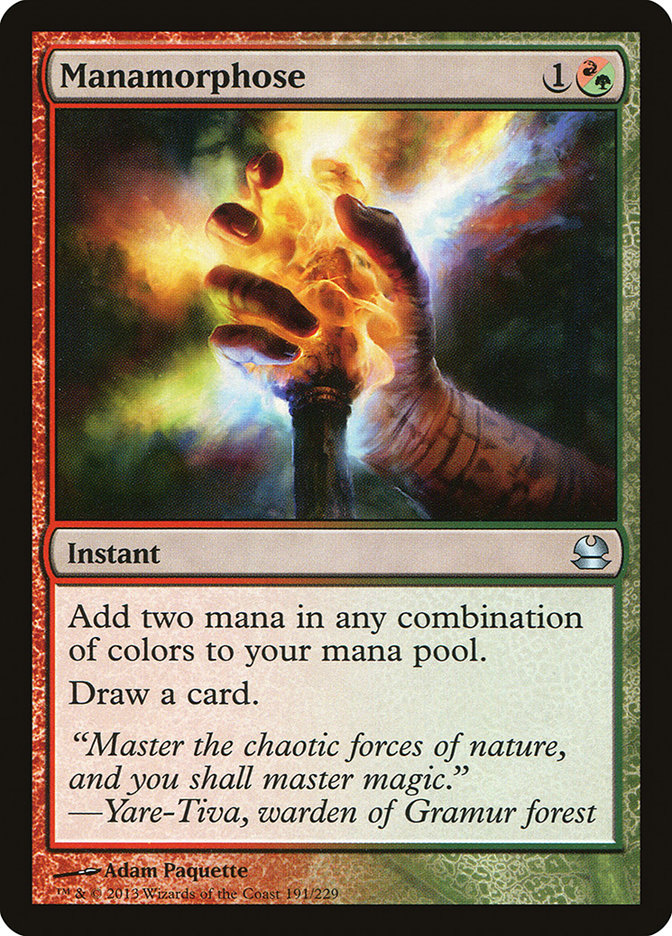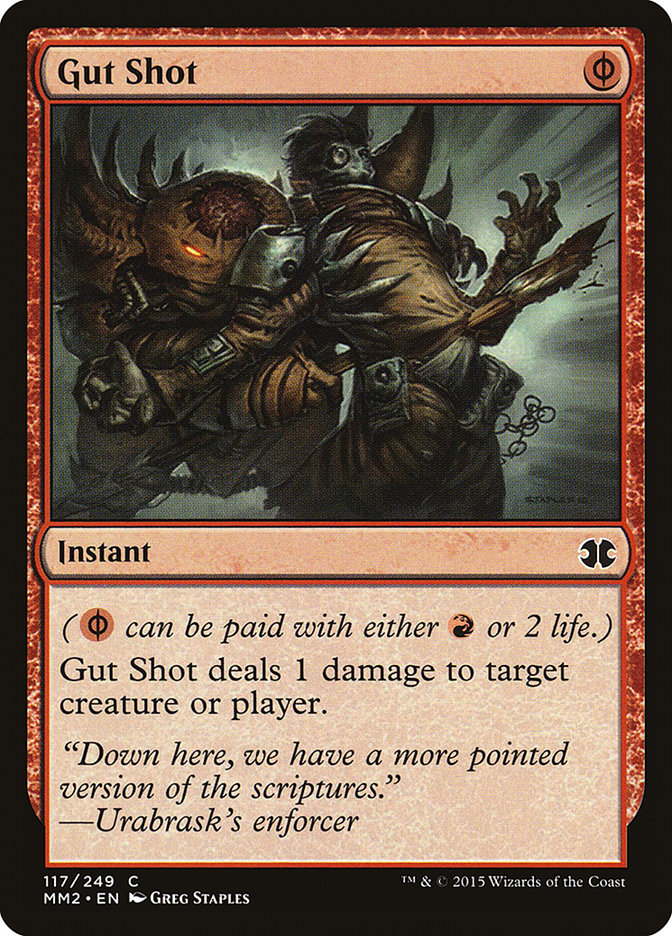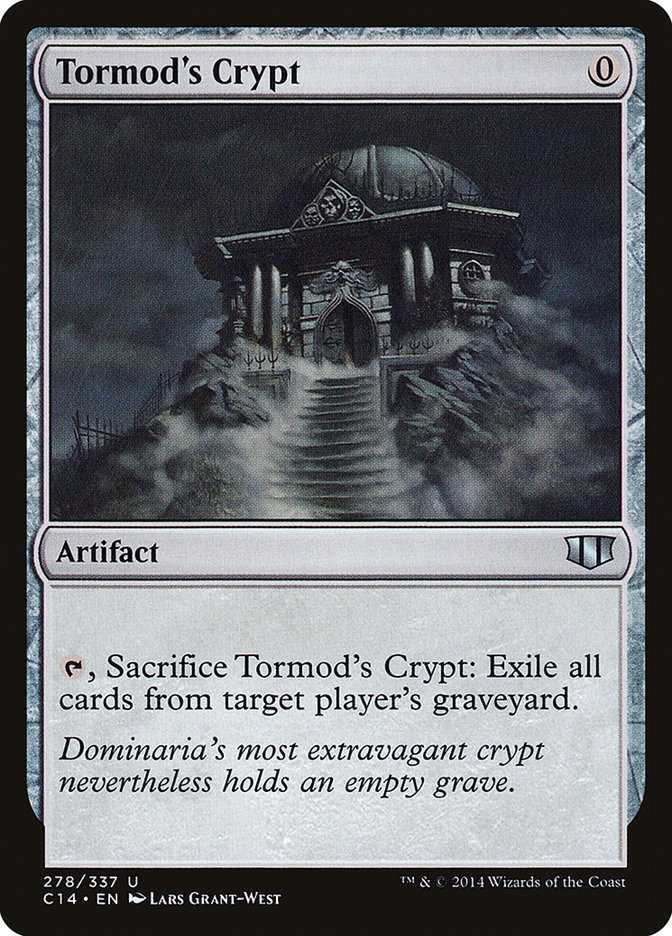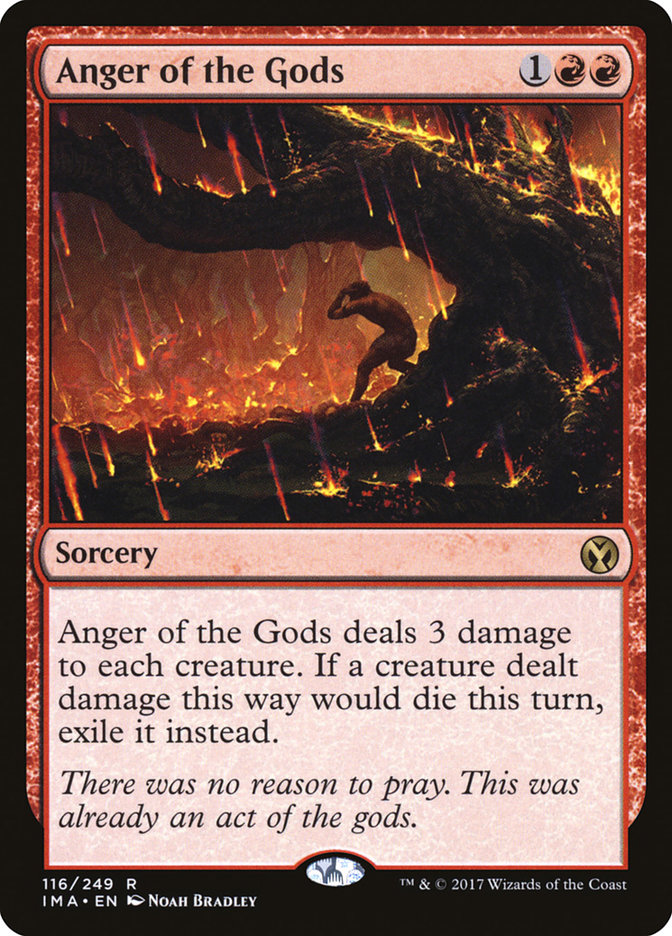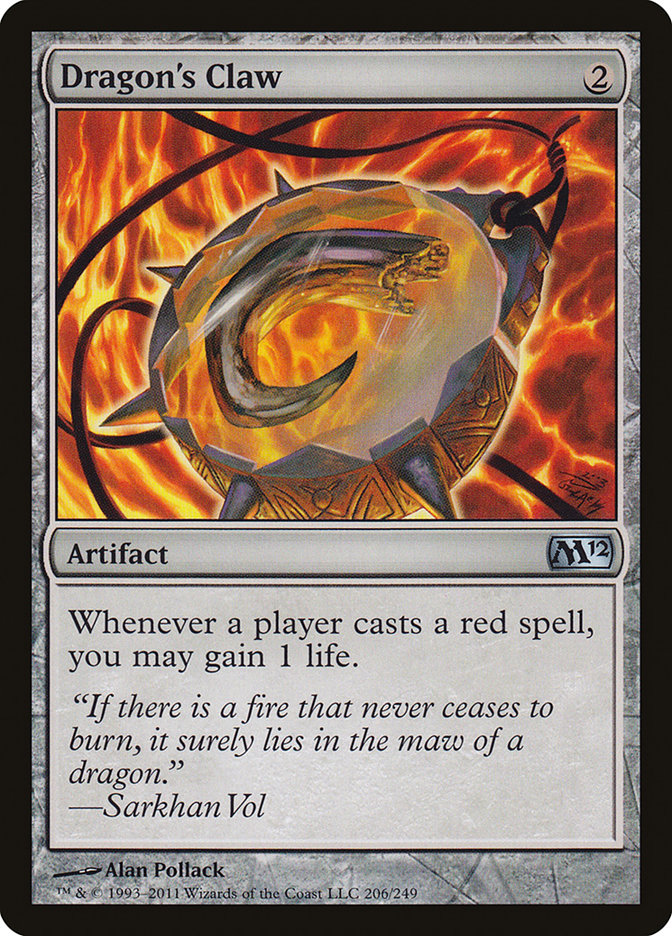The story of last weekend’s Team Constructed Open in Las Vegas actually
begins a few months ago, after the Team Constructed Open in Dallas-Fort
Worth. I was reticent to fly to an Open, but having had a great experience
over the three previous tournaments of teaming with THE Bridesmaid Tannon
Grace and Brennan DeCandio, I bit the bullet on a flight and joined them
for what turned out to be a second finals loss.
The second dagger sealed my fate. I immediately told my teammates that I
was 100% committed to the Open in Las Vegas, a tournament I had previously
told our Team BCW manager I would not be attending due to the travel,
proximity to Thanksgiving, and the fact that I loathe the city of Las
Vegas. But in true Magic degenerate fashion, I had to chase that white
whale.
Some good fortune came with the printing of Creeping Chill, which revived
the Dredge deck that I’m both experienced with and love to play, but with a
tournament of this magnitude I wasn’t going to settle for the obvious
choice, especially because it seemed like the level of graveyard hate in
the metagame wasn’t going to drop even as Dredge went from momentarily
dominant to another tier one deck, on the level of Bant Spirits or Tron.
So my plan was to devise a list of decks to try out, work on the ones that
showed promise, and default to Dredge if I didn’t find anything good
enough. Amulet Titan was the first deck I tried and while it performed
well, it seemed clear that the deck was good in fair matchups and
significantly behind against fast combo like Infect or Storm. If I was
going to devote time to learning such a complex deck, there needed to be
more upside.
Second on the list was to explore Arclight Phoenix. It’s a very powerful
card that has proven its worth in Standard, and the higher density of cheap
spells and ways to get it into the graveyard that exists in Modern make it
even more appealing in the larger format. Since the release of Guilds of Ravnica we’ve seen the card in several different Modern
shells, from burn-heavy Mono-Red lists to modified Hollow One decks to a
Mardu Pyromancer variant that can use Arclight Phoenix to put more pressure
on combo or further its typical attrition plan.
I had played with a Mono-Red list on VS Live! and came away impressed, but
the shell that caught my eye was Izzet:
Creatures (12)
Lands (18)
Spells (30)
- 4 Lightning Bolt
- 4 Serum Visions
- 4 Fiery Temper
- 4 Manamorphose
- 2 Burst Lightning
- 4 Faithless Looting
- 4 Thought Scour
- 4 Chart a Course
Sideboard

The primary draw to Izzet is Thing in the Ice. It’s a powerful card against
any creature deck and excellent against Hollow One and Dredge. It also
gives the deck a threat base that is resilient to Lightning Bolt/Lightning
Helix so you’re likely to overload the narrow range of removal that is
effective for your opponent in the matchup. And lastly, the density of blue
cantrips makes finding and rebuying Arclight Phoenix multiple times in a
game much easier. The Mono-Red lists rely on their burn spells to close
games rather than recurring Arclight Phoenix while this variant has more
powerful cards.
My record with the above list was average, which in many instances would be
enough for me to shelve the deck and move on, looking for something great.
But with that average record came a realization that the deck was far from
optimized, and there was a lot of potential with how powerful the deck’s
top draws were. I had four points of contention with the list as built:
1. Bedlam Reveler Underperformed
When Bedlam Reveler was first printed, many players tried to pair it with a
pile of blue cantrips in the hopes of turning it into a high-end threat for
a Delver-style deck. That quickly proved unworkable because the blue
cantrips keep your hand half-full, negating the potential card advantage
from Bedlam Reveler’s triggered ability.
With the emergence of Mardu Pyromancer, it became clear that Bedlam Reveler
worked best in a deck full of cheap, interactive spells that could stall
the game on the early turns and leave both players light on resources, so
Bedlam Reveler would provide a massive advantage. The Arclight Red lists
utilize Bedlam Reveler effectively because they are full of burn spells and
Desperate Rituals and not many cantrips, but porting the card over to Izzet
was a mistake.
Moreover, Bedlam Reveler is weak to graveyard hate, which is quite common
in the Modern metagame right now. Lists with a creature base of Thing in
the Ice, Arclight Phoenix, and Bedlam Reveler were too vulnerable to Rest
in Peace, Leyline of the Void, and Relic of Progenitus for my liking, as if
I was going to play a deck that was weak to graveyard hate I’d just play
Dredge.
To solve this issue I borrowed some tech from Standard and swapped the
Bedlam Revelers for Crackling Drakes. Four mana is a lot in Modern, but in
this deck Crackling Drake regularly has enough power to one-shot the
opponent, making it a must-answer threat that gains immediate card
advantage and plays great defense against most creatures. And with the fact
that it counts cards in exile, it completely shrugs off all forms of
graveyard hate.
Since I moved to Crackling Drake, I haven’t been phased by graveyard hate
at all, to the point where I don’t think you should be bringing it in
against this build. Even cards like Relic of Progenitus and Nihil Spellbomb
that replace themselves require you to leave up mana in order to tag an
Arclight Phoenix, and if they aren’t doing that they are a waste of mana.
2. The Manabase Has Too Many Basics
Few people like basic lands as much as I do, and in a two-color deck you
generally have room for plenty to minimize life loss and cover Path to
Exile, Field of Ruin, etc. but this deck relies on transforming Thing in
the Ice and recurring Arclight Phoenix as quickly and reliably as possible.
In order to do that, you need to be able to chain cantrips and other cheap
spells together regardless of which ones you happen to draw.
Sometimes that spell chain is red heavy with Faithless Looting into Fiery
Temper and sometimes it’s blue heavy with a Serum Visions and Thought
Scour, and drawing too many basics impedes your ability to cast your
spells. Two Islands quickly became two more fetchlands, and I learned to
prioritize fetching shocklands unless my life total was a significant
priority.
3. MOAR Free Spells
Of course, it doesn’t matter what lands you have if your spells cost zero.
For this reason, Manamorphose quickly emerged as the best card in the deck,
quite the feat in a list featuring Faithless Looting.
Gut Shot is a staple in other Arclight Phoenix decks as another free spell
that happens to be very well-positioned right now. It’s very good against
Humans and Bant Spirits, particularly for answering Thalia, Guardian of
Thraben, and it’s effective against all flavors of Affinity as well as
Infect, often serving as the best insurance against Inkmoth Nexus before
the threat of transforming Thing in the Ice comes online.
Even in matchups where the one damage isn’t relevant, serving as a free
spell often helps return Arclight Phoenix or transform Thing in the Ice a
turn earlier than normal, giving you a faster clock against combo and
control decks.
There’s also many spots where the threat of a free spell makes your
opponent play more cautiously, buying you precious time or letting you tap
out more aggressively for a Crackling Drake. It’s easy to underestimate the
power of doing something for free when the effect is so marginal, but this
is a deck that thrives off of casting multiple spells in one turn so it’s
more valuable than the text on the card.
4. The Sideboard Needed an Overhaul
I wasn’t using much of my sideboard during my first matches and in Modern,
that’s a problem. This list was clearly build with Dredge in mind with the
full set of Tormod’s Crypt and three copies of Anger of the Gods, but
Dredge isn’t as prevalent as it was a few weeks ago. Anger of the Gods is
good against many decks in Modern so I wanted to keep those, but the
Tormod’s Crypts went out in favor of Surgical Extraction which is another
free spell and one that I think is particularly good for this deck against
Dredge.
With Thing in the Ice and Anger of the Gods, the recursive creatures aren’t
as threatening, but Conflagrate makes Thing in the Ice hard to transform
and the reach from Creeping Chill makes it easier for the Dredge player to
pace their threats against the sweepers. So my plan is to prioritizing
answering those cards with my hate and then contain their creatures while
attacking with Awoken Horror and Crackling Drake.
The other card I wasn’t happy with was Dragon’s Claw, because it’s too
narrow. The Burn matchup isn’t good, but with the printing of Creeping
Chill, Burn has become much worse positioned and isn’t that popular, so I’m
not willing to commit too many resources to turning it around. Collective
Brutality is a great card against them while being effective in plenty of
other matchups and serving as a discard outlet for Arclight Phoenix. A
single Watery Grave with the fetchlands, Manamorphoses, and other cantrips
were enough to enable the light black splash.
With what I learned, I built the following list:
Creatures (12)
Lands (18)
Spells (30)

Notes on some of the choices:
-
The Lightning Axe made its way into the deck over the fourth Chart
a Course in an effort to cut down on two-mana spells and gain an
answer to creatures with four or more toughness.
-
The Disdainful Stroke was initially a Negate, but I wanted a better
card against Primeval Titan and Wurmcoil Engine. If big mana decks
get more popular I would look back to the Alpine Moons that Andrew
Schneider ran as a more powerful card for those matchups, but I’d
rather play more widely applicable cards.
-
The Ral, Izzet Viceroy came about when I went looking for a
powerful threat I could bring in against midrange and control
decks. Jace, the Mind Sculptor and Chandra, Torch of Defiance were
the other considerations, but Ral’s ability to answer a Tarmogoyf
or Baneslayer Angel put it over the top.
-
Fiery Temper is a staple in a lot of these lists, but I’ve been
underwhelmed by it. It’s unreliable to cast for one mana and in
doing so, has to be cast at sorcery speed, which is awkward against
Aether Vial decks. I want something other than Arclight Phoenix to
discard for value and having some extra burn in game one is nice,
but I’ll be looking for other options.
The Sideboard Guide
VS
Azorius Control
Out:



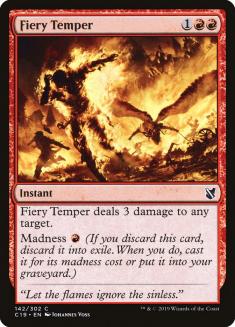

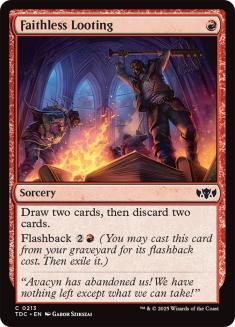

In:
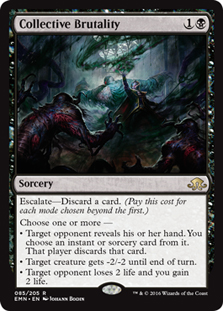

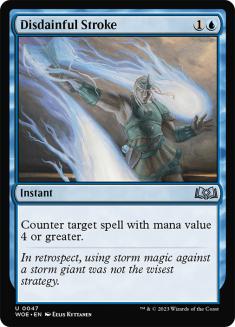
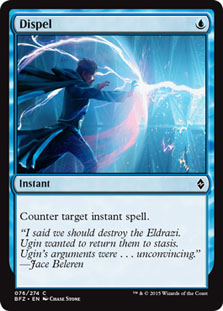

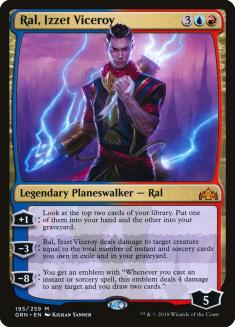

As long as you protect your threats when possible and stop them from
getting traction with a planeswalker or Baneslayer Angel (the main reason
Lightning Axe stays in) this matchup is very favorable.
VS
Bant Spirits
Out:
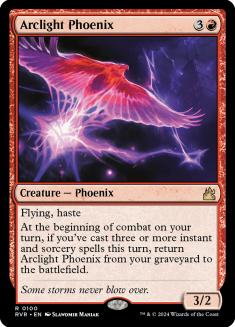



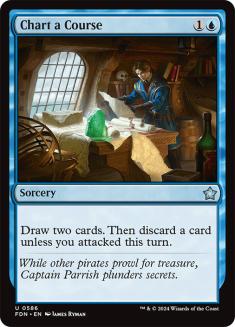


In:
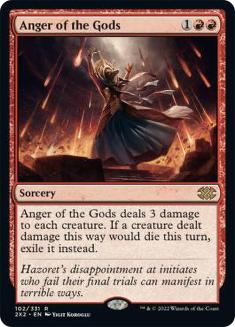


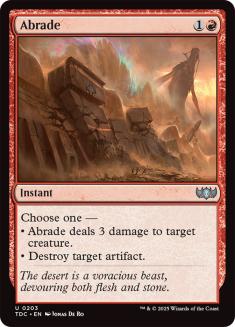

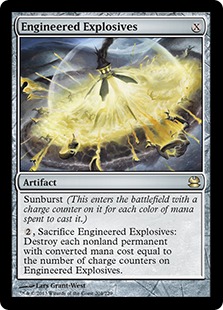

With these decks moving away from Path to Exile and toward Reflector Mage I
don’t think you want Dispel, but that could also be a function of me having
too many cards for this matchup, since Dispel is still a fine card in the
matchup. Fiery Temper gets cut because it’s too vulnerable to their
disruptive elements when you cast it at sorcery speed with a discard
outlet.
This matchup is about keeping their battlefield in check early so they
can’t establish a clock while leaving their mana up to play reactively.
Finding your window to land a threat and turn the corner is important, as
is keeping their creatures in Lightning Bolt range.
VS
Humans
Out:









In:









Humans plays more at sorcery speed than Spirits and makes it easier to
assume a hard control role. I’m still not sold that sacrificing the
explosive potential of Arclight Phoenix on the play is correct, and you
need plenty of sweepers to make this plan work, but it’s what makes the
most sense to me on a strategic level.
VS
Tron
Out:



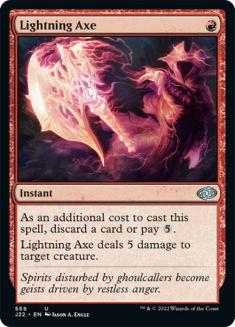

In:
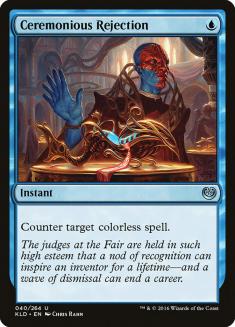




You have to take risks in this matchup in order to race the inevitability
of their big spells, so put pressure on them and hope to finish them with
burn spells before things go too far south.
VS
Storm
Out:










In:







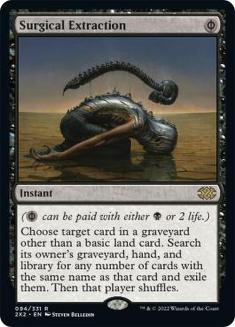


The Engineered Explosives provides extra insurance against Empty the
Warrens while also able to kill the cost-reduction creatures. I’m not sold
on the Disdainful Stroke, but if they go hard away from Gifts Ungiven and
Past in Flames in favor of dodging graveyard hate and grinding a long game,
I’m happy.
More generally, I like to bring out some number of Faithless Lootings and
Arclight Phoenixes against heavy graveyard hate, and if enough Phoenixes
come out, then the Ral comes in to regain some threat density. Chart a
Course is the worst cantrip because it costs two mana, and you don’t need
to turbo out your Arclight Phoenixes in the sideboard games.
Moving forward, I’m mostly interested in exploring more sideboard options.
Anger of the Gods plays awkwardly with Arclight Phoenix but is one of the
few cards that plays double duty against Dredge and other creature decks.
Collective Brutality didn’t come in very often so it’s possible you just
want to ignore Burn and shade towards other matchups, like big mana decks,
or even explore other splashes. White would give you access to Stony
Silence and plenty of lifegain options.
While I think I’ve made great strides in tuning the archetype, there’s
still plenty of potential left to extract here. The base-Izzet Phoenix
lists are the most versatile, able to play an aggro, control, or combo game
when necessary, so maximizing the deck’s versatility is a tricky problem.
But that versatility, along with the deck’s resilience to graveyard hate,
make me favor it over the other Arclight Phoenix decks.
If I register eight copies of Arclight Phoenix and eight copies of
Crackling Drake at the Invitational in December, I’ll be a happy man.


